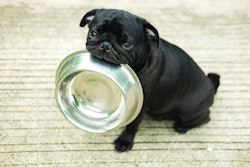
2020’s massive economic disruptions resulted in some significant changes to how consumers interact with brands, not only in terms of product purchasing but also in terms of research, communication and yes, loyalty. The good news is all these changes provide opportunities for brands to revisit and optimize their strategies for the future.
“The really unique opportunity we have as brands is that we’re in an environment where anything is possible,” said Amy Wills, vice president, marketing effectiveness for global market research company GfK. “We as marketers know it’s incredibly hard to disrupt a marketplace sometimes. This is a situation where we’ve had a huge disruption and that has kind of opened the door for a lot of innovative thinking, to create, to evolve your product offerings.” Wills spoke as part of an April 2021 GfK webinar, “How brands can win consumers’ trust in the new marketplace.”
Adaptation and recovery: knowing your consumers right now
Wanting to return to “normal” is an instinct that brands need to fight against, according to Eric Wagatha, head of GfK Consumer Life (NA), who also spoke during the webinar.
“If your discussion is ‘how do we get back to normal,’ you’re missing the point,” said Wagatha.
Different demographics are at different points in their recovery from the current global crisis, according to GfK data. While 57% of consumers overall said they will be cautious about going back out (and presumably resuming in-person shopping activities), there are differences in how younger demographics and older demographics feel they’re currently living. A bit more than half of consumers said they’re living normally, with the younger demographic skewing more towards that answer, while a little less than half said they’re living very differently, with the older demographic leaning more in that direction.
“When we have these kinds of crises, there is an adaptation phase and a recovery phase,” said Wagatha. It’s vital, he said, for brands to understand what phase consumers are in and what those phases mean to different people.
The 18–35 crowd: win them over today to keep them tomorrow
The 18–35 cohort are the age range where brand loyalty is low but openness to new products is high. This group is at a time in their lives where they’re experimenting with brands, trying to find out what suits them best so that when they do settle into a household routine, they know what they want to spend their money on.
“We can’t ignore that the future is this cohort, in their size and in their purchasing power,” said Wagatha.
Unsurprisingly, according to GfK data this demographic is more likely to switch away from a favorite brand than average, but interestingly they’re less likely to buy whatever is convenient or less expensive. Additionally, they’re below average for loyalty characteristics such as safe use of data, excellent customer service and helping them save money.
All of this is certainly enough to keep brands on their toes.
“It’s not about focusing on any one, two or three aspects, it’s about recognizing that there are more dimensions to loyalty,” said Wagatha.
If you want your brand strategy to succeed in the current climate, it’s time to look forward.
“Don’t just turn the page back and try to replicate what used to work; widen your lens and take a look at how you can evolve,” said Wills.
Solid advice for brands and solid advice in general.















